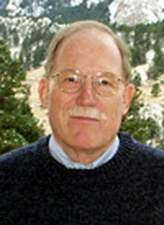David Williamson

The 2005 Vilhelm Bjerknes Medal is awarded to David Williamson as a pioneer and leading expert in the field of atmospheric general circulation modelling for weather and climate and in recognition of his leadership role in global modelling community activities.
David Williamson is one of the pioneers of the present-day discretization methods used in numerical modelling of the atmosphere. At the dawn of the age of the development of numerical methods for the atmospheric primitive equations, in the late sixties, Williamson has addressed the problems of discretization on a sphere exploring – at the same time but independently from Robert Sadourny – the use of geodesic or hexagonal grids. It is only today, 35 years later, that hexagonal and related regular geodesic grids have become highly popular and more and more widely used, testifying to the foresight Williamson displayed at this early time. Another area in which Williamson made his mark is that of initialization techniques for the global atmospheric modelling. His work with Clive Temperton on normal mode techniques had distinctly moved this crucial field forward. David, to colleagues known as Dave, was also a leader in the development of semi-Lagrangian techniques, today used in a large number of modelling centres. Possibly his most widely used contribution is a series of numerical tests designed to expose the strengths and weaknesses of new numerical techniques, tests that have come to play a central role worldwide in the field of atmospheric modelling, enabling the skill of basic model numerics to be assessed in a consistent way.
Among David’s numerous publications are a series of reviews that have achieved great prominence. Some of them, e.g., a recent very extensive review chapter coauthored by René Laprise, may well offer the most authoritative up-to-date exposition of the numerical design approaches used in atmospheric models, so that they are routinely used in academic environments and in operational numerical weather prediction development efforts.
Williamson’s leadership role in many community activities has been crucial in raising those to an international stature, and had visibly benefited the progress of the field. Among those are his essential contribution in making the National Center for Atmospheric Research (NCAR) modelling capabilities available to the academic community via the NCAR Community Climate/ Community Forecast Model mechanism; his steady, over many years, contributions to WMO’s Joint Scientific Committee’s Working Group for Numerical Experimentation; his lead role in still other high-profile international activities, such as the AMIP (Atmospheric Model Intercomparison Project), and the newly formed Aqua-Planet initiative; and finally his critical role in establishing and running the regular Partial Differential Equations on the Sphere (PDEs) workshops, a gathering of the highest international stature bringing together numerical modellers from the atmospheric sciences, ocean sciences, and other branches of fluid dynamics.
